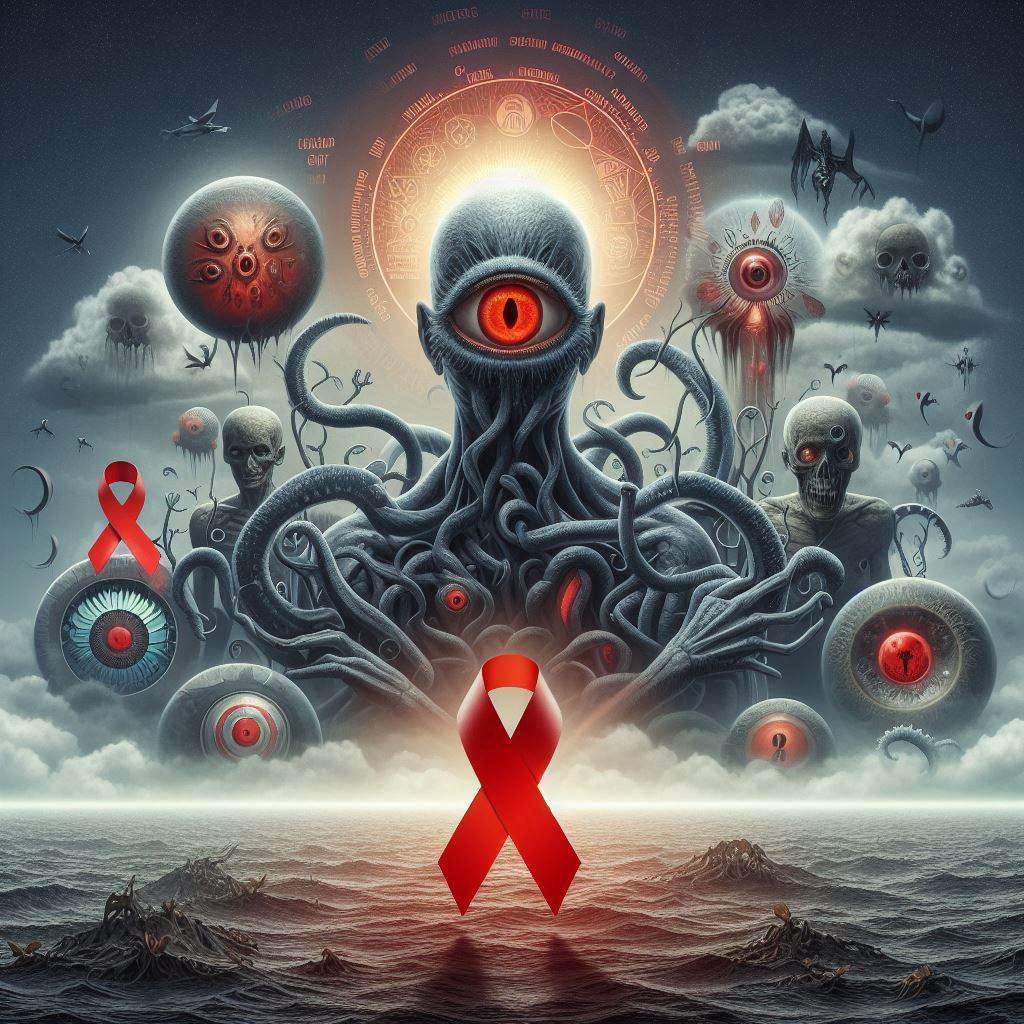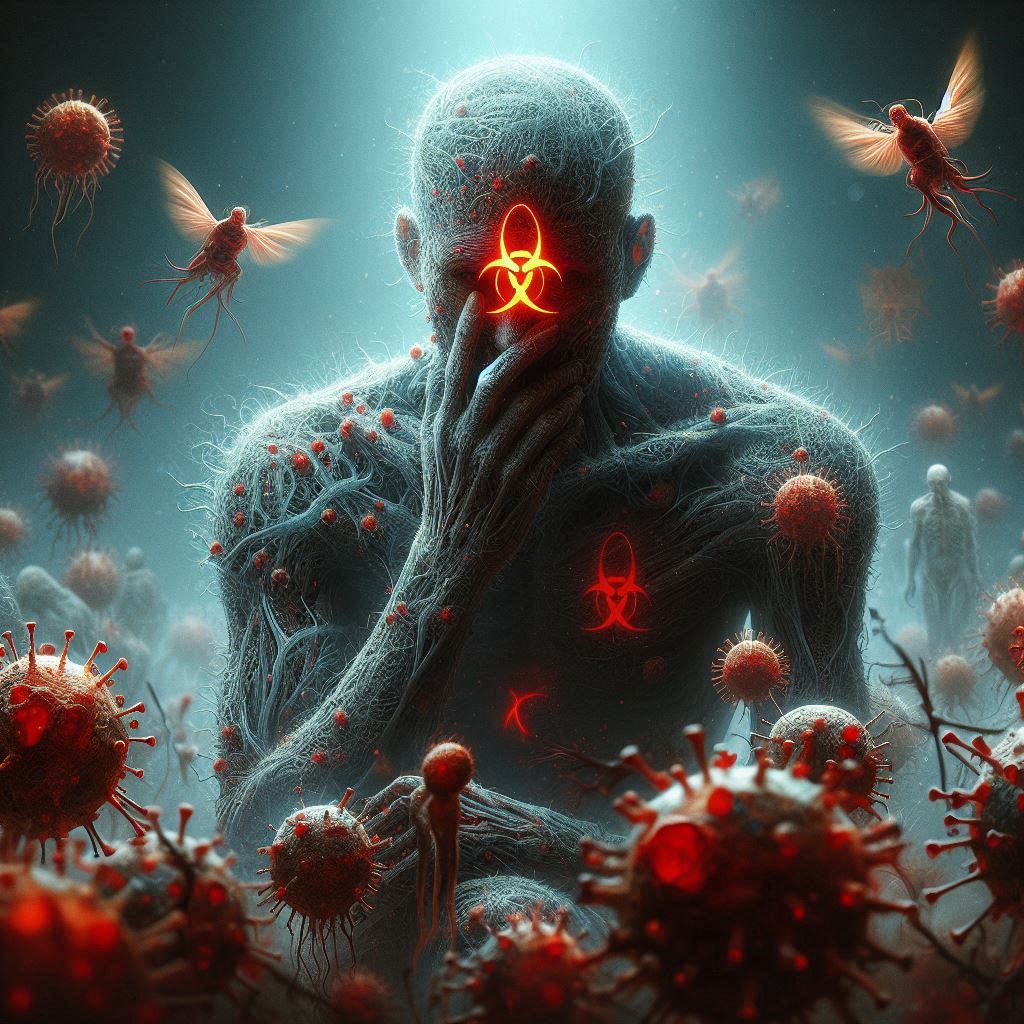When HIV enters the body, it doesn’t kick down the doors like a loud invader. Instead, it slips in quietly, like a spy in disguise. It begins a slow, strategic war, setting traps and slowly dismantling the body’s defense system. The symptoms we see are not just signs of illness—they’re smoke signals rising from the battlefield, warning us that something deeper is unfolding.

But before diving into these signs, let’s explore the ever-relevant question: Where did AIDS come from? Because understanding its origin helps explain its stealth, its power, and the way it silently advances.
Where Did AIDS Come From?
AIDS—Acquired Immunodeficiency Syndrome—is the final stage of HIV infection. The question “where did AIDS come from” has puzzled people for decades. The answer begins in the forests of Central Africa, where scientists discovered that a version of HIV existed in chimpanzees as SIV (Simian Immunodeficiency Virus). Somewhere in the early 20th century, this virus made the jump from primates to humans, likely through the handling of bushmeat. Over time, it adapted to human hosts, becoming the deadly virus we now know as HIV.

This long, quiet origin mirrors how the virus behaves inside the human body—silent at first, and then devastating when least expected.
The First Act: Acute HIV Symptoms
Think of your immune system as a castle. When HIV first attacks, it sends a small but sharp army. This is the acute stage, usually 2 to 4 weeks after infection. Most people experience flu-like symptoms, including:
- Fever
- Fatigue
- Sore throat
- Swollen lymph nodes
- Rash
- Headaches
This stage is often mistaken for a seasonal virus or stress. It’s as if the invader is testing the castle walls—enough activity to stir suspicion but not enough to alarm the guards.
The Quiet Years: Clinical Latency Stage
Once inside, HIV doesn’t launch a full-scale war right away. Instead, it hides in the shadows—like an enemy nesting in the walls, slowly weakening the structure without detection. This stage can last years, and a person might feel completely normal.
But during this time, HIV is silently multiplying, attacking CD4+ cells (the army generals of your immune defense). Without treatment, your immune system keeps shrinking until it can no longer fight off everyday threats.
The Final Siege: Symptoms of AIDS
When the immune system is heavily compromised, the virus goes on a full offensive. This is when AIDS develops—and the symptoms are more severe and frequent. It’s as if the walls have finally collapsed, and enemies flood in from every direction. Common signs include:
- Rapid weight loss
- Chronic diarrhea
- Persistent fever or night sweats
- Extreme fatigue
- Skin rashes or sores (especially in the mouth and genitals)
- Pneumonia
- Memory loss or neurological disorders
Most dangerously, a person becomes vulnerable to opportunistic infections—illnesses that a healthy immune system would easily fight off, such as tuberculosis, Kaposi’s sarcoma, and certain types of cancers.
These are not just symptoms—they are the cries of a broken fortress.
Early Detection is Everything
Recognizing these symptoms early is critical. Like spotting cracks in a dam, early detection of HIV gives a person the best chance to prevent progression to AIDS. Modern antiretroviral therapy (ART) can halt the advance, rebuild the defenses, and allow a person to live a long, healthy life.
A Virus That Hides and Waits
So again, we ask: Where did AIDS come from? It came from nature, from the forests, from a quiet transfer of power between species. But more symbolically, it came from silence—from a virus that knows how to hide, how to wait, and how to attack when least expected.
The symptoms of HIV and AIDS are the story of that virus’s journey—from a whisper to a roar. And in learning to read those signs, we gain the power to fight back—not just with medicine, but with awareness, prevention, and timely action.


